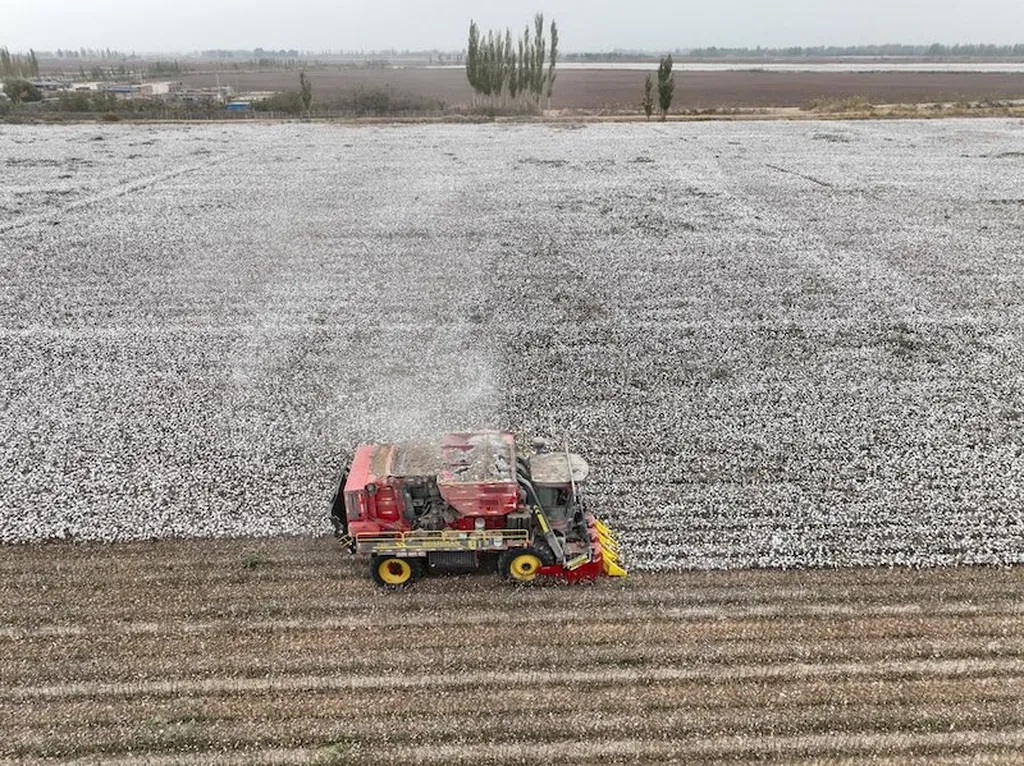In the arid expanses of Xinjiang, China, cotton farmers face an uphill battle against the elements. Rising temperatures and unpredictable weather patterns threaten to disrupt the delicate balance of cotton production, particularly the crop’s phenology stages—critical periods of growth and development. However, a recent study published in the journal *Smart Agricultural Technology* (translated from Chinese as *智能农业技术*) offers a glimmer of hope, demonstrating how precision agriculture and climate-smart practices can optimize cotton yields in water-limited environments.
At the heart of this research is the APSIM-cotton model, a sophisticated tool designed to simulate and optimize cotton growth under varying climatic conditions. Led by Adnan Arshad, a postdoctoral researcher affiliated with Lanzhou University and the China Agricultural University, the study leverages 40 years of historical climate data, cotton yield data from six agrometeorological locations, and two years of field trials with five different sowing dates. The goal? To calibrate the APSIM-cotton model and identify the optimal sowing windows that can enhance yield and mitigate the impacts of climate change.
“The observed warming trend from 1961 to 2020 has shown a significant temperature increase of 0.37°C per decade, which has led to a predicted yield decrease of 1.4% per decade in Xinjiang,” explains Arshad. “Our study reveals that interannual temperature variability influences cotton growth and yield more than any other climatic factor.”
The APSIM-cotton model simulations provided valuable insights into the impact of different sowing dates on cotton phenology and yield. The model’s validation results were impressive, with differences in sowing-emergence timing of just ±2.7 days, and similarly tight margins for other critical growth stages. The study found that rising temperatures negatively affect the duration of key phenological phases, such as sowing-emergence, emergence-flowering, flowering-boll open, and full crop maturity, shortening them by -3.14, -2.15, -2.09, and -1.17 days per °C, respectively.
One of the most compelling findings of the study is the identification of climate-smart sowing windows—specifically, between April 15 and 25—that can extend the growth period and enhance natural resource optimization. “Climate-smart adapting sowing windows of cotton runs a practical approach for increasing yield and mitigating climate change risks,” Arshad asserts.
The implications of this research extend far beyond the cotton fields of Xinjiang. As the world grapples with the realities of climate change, the need for precision agriculture and smart-agricultural technologies has never been greater. The APSIM-cotton model and similar tools can help farmers adapt to changing climatic conditions, optimize resource use, and ultimately, enhance crop yields.
For the energy sector, the commercial impacts are significant. Cotton is a vital crop not only for the textile industry but also for the production of biofuels and other renewable energy sources. By optimizing cotton yields and ensuring a stable supply, this research can contribute to the broader goals of energy security and sustainability.
As we look to the future, the integration of climate-smart practices and precision agriculture technologies will be crucial in shaping the next generation of farming. The work of Adnan Arshad and his colleagues serves as a testament to the power of innovation and adaptation in the face of climate change, offering a roadmap for farmers, policymakers, and industry leaders alike. With the insights gained from this study, the path to a more resilient and productive agricultural future is becoming increasingly clear.

